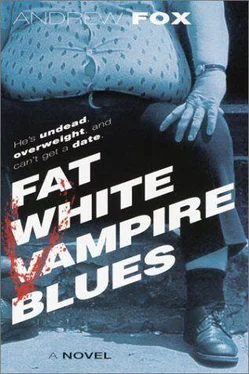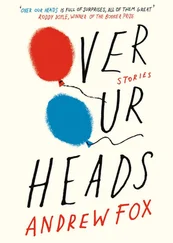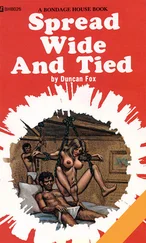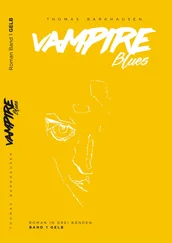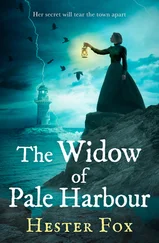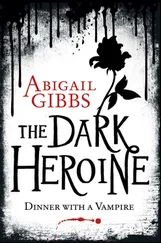It’d be a few hours yet before his friend Erato would make his nightly appearance at the Trolley Stop Cafй; Jules planned to hit him up for information on health-related conventions coming to town. That left Jules time to do some work on the Caddy, maybe even listen to a little music, before heading out.
He walked past his woodworking machinery to the back of his basement, which was actually the windowless ground floor of his house, then laboriously climbed the stairs to the main story. He walked across his checkerboard-tile kitchen and descended a separate set of stairs to his garage. He’d had the garage added on to the house in the early 1960s, after his mother had passed on to her heavenly reward. He yanked the frayed bit of rope that clicked on the ceiling bulb. A quarter of the garage was filled to overflowing with five decades’ worth of tools, auto supplies, and broken hi-fi sets that he’d never gotten around to fixing, plus bits and pieces of old coffins. The rest of the garage was filled with the Cadillac.
He hadn’t messed around with his jury-rigged gas injection system in four years, not since he’d yanked the components out of the Caddy following his initial debacle.Well, if George Washington had stopped tryin‘ after Valley Forge, we’d all be livin’ in the United States of Canada.
He opened the Caddy’s passenger-side rear door as far as it would go. Then he slid down from its place on a shelf a long, thick piece of Plexiglas, specially fitted to divide the cab’s interior into separate passenger and driver compartments. Jules had purchased the divider five years ago, after a spate of cabdriver murders had prompted the city’s Taxi Bureau to offer the protective shields to drivers at an enticing discount.
His original conception had been good, Jules reminded himself as he crawled into the Caddy’s backseat and pulled the Plexiglas divider in behind him. What had ruined his plan had been his failure to pay attention to the little details. He reached through the open window and grabbed a socket wrench and a Ziploc bag full of bolts. Then, grunting with exertion, he lifted the shield into place and partially screwed in the first two retaining bolts. Five minutes later, the shield was secure. But not snug. Not quite.
Jules inserted the tip of his index finger between the top edge of the Plexiglas and his cab’s head liner. That quarter-inch gap had been enough to royally screw his plans the last time. Enough to almost make him total the Caddy. The memory made him shiver. He wouldn’t make the same fuckup again; he’d be sure to putty the gap this time.
Jules clambered out and opened his trunk. He leaned inside with a flashlight and carefully examined the rubber gas-feed lines that snaked from the rear right corner of the trunk through holes drilled into the passenger compartment, connecting with spray nozzles hidden inside the rear speaker housings. The hoses looked to be in good shape, with no visible cracks or kinks. But Jules would be certain to test them before he took his knockout system back out into the field. He glanced over at the dusty red canisters of laughing gas, purchased from Tiny Idaho, a local hippy anarchist, that were lying in a corner of the garage. Maybe he could get another use out of them? How long did laughing gas stay good? Jules had no idea. He’d just have to test the stuff before heading out on the hunt.
Jules glanced at his watch again. Ten twenty-three. He had another hour to kill before heading over to the Trolley Stop. Good. His visit to Bamboo Road the night before had left him off-kilter, so a little cultural relaxation would do him a world of good.
First, he’d treat himself to a little snack. All that exertion with the car had perked his appetite. He climbed up the stairs to the kitchen, opened the refrigerator (one of his mother’s last purchases before she’d been loosened from her earthly shackles), and took out one of the jars of blood from two nights ago. He unscrewed the cap and sniffed the contents.Hrmmm. Already, the blood had lost much of its freshness. He’d have three days, maybe four, before it’d be undrinkable and he’d have to pitch whatever was left. Erato’d better have a juicy tip to give him tonight. He took a swig of blood, then rescrewed the top and put the jar back in the fridge. Jules swished it around the back of his mouth before swallowing it; actually, it wasn’t all that bad. His biggest problem was that he’d let his standards get too high.
In the living room, Jules perused his collection of classic, original jazz pressings, most purchased during his first two decades as a vampire. Following a few minutes of delicious indecision, he selected a thick, heavy, seventy-eight-rpm record and arranged it carefully on his Victrola. As soon as the worn stylus touched the venerable platter, the warm, rich tones of Bix Beiderbecke’s Jazz Wolverines emerged from the gramophone’s lacquered horn. Jules didn’t play his original records much anymore; he usually listened to reel-to-reel or cassette tapes he’d made, rather than subjecting his irreplaceable collector’s items to more wear. But sometimes only the first-generation recording, playing on the equipment it’d been made for, would do.
Now for some appropriate reading material. In his mother’s old sewing room, long ago converted into his library, Jules breathed in the rich, glorious odor of decaying pulp, a bouquet he’d always associated with immeasurable pleasure. Three walls were lined entirely with hundreds of adventure, mystery, and horror pulp magazines dating back to the Great Depression, and thick stacks of comic books from the war years. As a young vampire, Jules had thrilled to the nocturnal adventures of the Shadow, Chandu the Magician, and the Spider. Once comic books began displacing the pulps, Jules quickly discovered a strong affinity for Bob Kane’s Batman. Better still were Captain America Comics, which usually featured great gobs of vampires, even if they were invariably portrayed as evil Japs or Nazis. Jules had actually written a long letter to the editors at Timely Publications concerning that subject. He suggested that, since the Axis seemed to have an unlimited supply of vampires to fight on their side, surely the United States should have its own vampires, too. Wasn’t it unrealistically one-sided to portray all the vampires in the world as evil Fascists? Shouldn’t Captain America occasionally team with a heroic American, Canadian, or British vampire, one eager to sink his fangs deep into Hitler’s repulsive neck? Jules never received a reply to his letter, and he’d been bitterly disappointed when the editors neglected to print it on the “Captain America’s Fan Mail” page.
The whole notion of a boy sidekick had come to him from the comics. Captain America and Bucky. Batman and Robin. The Sandman and Sandy. The Hooded Terror and… Doodlebug.
Doodlebug.Rory “Doodlebug” Richelieu. Hard as Jules tried to forget him, the memory of his ex-sidekick wouldn’t fade.
When Pearl Harbor was bombed and Jules heard President Roosevelt’s stirring declaration of war on the radio, the young vampire had felt a powerful urge to serve his country. Only the thought of having to submit to an army physical had kept him away from the local recruiting office; what the army physicians would have made of his room-temperature thermometer reading and his fatal vulnerability to sunlight could only be conjectured.
He nursed his frustration at his inability to serve with a renewed plunge into the escapism of comic books. Happily, he discovered that most of the costumed adventure heroes had also stayed off the troopships, opting to remain behind and fight fifth-column saboteurs on the home front. Striking terror in the hearts of Ratzi spies seeking to blow up the landing craft factory on Bayou St. John-nowthere was a job Jules could sink his teeth into. And of course, every masked mystery man worth his salt needed a teen sidekick. So Jules Duchon, the Hooded Terror, hadn’t been without one for long.
Читать дальше
